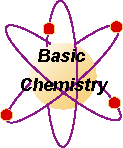Exploding Egg
Purpose:
A blown egg is filled with hydrogen gas and then lit with a match. The blue flame burns until the ratio of hydrogen gas to oxygen gas is correct and then the egg blows up.
Materials:
A blown egg is filled with hydrogen gas and then lit with a match. The blue flame burns until the ratio of hydrogen gas to oxygen gas is correct and then the egg blows up.
Materials:
Blow an egg. Take a raw egg and put a small hole in both ends using a large pin or fine probe from biology class. Puncture the yolk. Then blow in one hole while the egg contents come out the other hole. This is the hard part.
- zinc
- HCl ( 3 M hydrochloric acid)
- testube with a one hole stopper.
- about one inch of glass rod with some tubing (4 inches) attached.
- zinc
Procedure: Put on goggles, apron and rubber gloves.
Discussion:
The hydrogen reacts with the oxygen in the air when ignited by a flame. The exothermic reaction that occurs produces water. If this is done in a dark environment a blue flame will be seen.
2 H2 (g) + O2 (g) --> 2 H2O(g)


